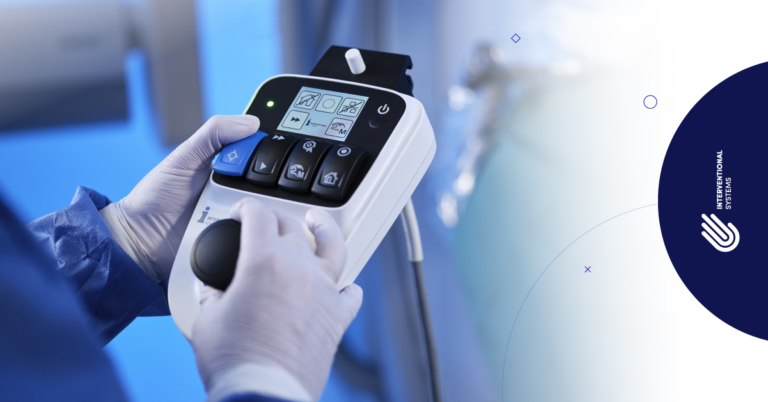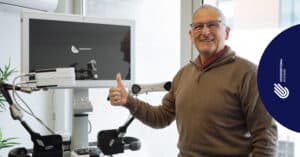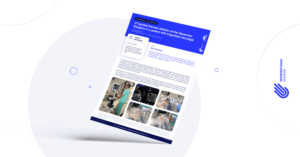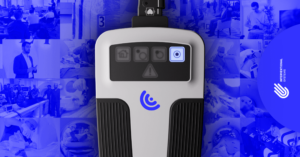Our Value-Based Robotics series advances towards the actual clinical use of robotics and issues concerning practicality and surgeon onboarding and training.
It is generally accepted that robotic surgical systems enable minimally invasive surgery and improve outcomes, including shorter recovery times, less scarring, and reduced healthcare costs.
This being said, the jury is still out on whether the additional cost of robotics over traditional methods carries sufficient additional benefits.
One of the key aspects of this equation is training: the absence of it, and how steep the learning curve is.
Training and technical support in the OR are still problematic
Regardless of the quality of training they had, surgeons are expected to take up to 100 cases to become proficient in using surgical robots. Some tech-savvy users may become confident in using the devices after just 20 cases when proper enabling technology is in place.
Inconsistent data is out on this subject:
- A study published by the British Journal of Urology found that when utilizing the da Vinci robotic system for prostatectomy cases, blood loss only dropped significantly after 50 procedures and that a decrease in the complication rate only occurred after 150 cases.
- In 2019, orthopedic surgeons using the MAKO robot have reported a learning curve of 7 cases for clinical workflow integration, but no learning curve effect for implant accuracy positioning on total-knee arthroplasty surgeries. This requires, however, the presence of clinical support specialists in the OR.
- There is anecdotal evidence of a steeper learning curve amongst newer indications, such as cardiology applications, with 6-12 months of training required. This is mostly due to changes in the clinical workflow stemming from the introduction of robotic solutions.
Given the high variation in performance between different users, platforms, and specialties, every manufacturer invests in building standardized training programs for its users, irrespective of their procedures and experience, while at the same time providing technical support in the OR.
The practical outcome of training programs is having surgeons spend hundreds of hours in surgical simulators and phantoms, aiming at learning all the technical and engineering aspects of the technology, so they can continue to do their own job in hopes they have mastered the buttons, surgical views, and screws well enough not to compromise results.
Having clinical support specialists in the OR, on the other hand, has been a safe haven for standardizing results and elevating outcomes of robots in the market. These specialists know technology in and out and are knowledgeable about how they are supposed to work within the clinical workflow. This has made them crucial assets for physicians to make sure they can offer the best in their practice.
However, COVID-19 has created a tectonic shift in how technical support occurs. With limited access to the surgical theatres, sales representatives have been barred from the operating room, and out they will remain in some institutions, especially in cases where this was a paid and onerous service contracted by the institutions themselves.
Micromate™: superior usability with no OR tech-support required
Instead of requiring the hospital staff to adjust their practice to incorporate new technology, Micromate™ seamlessly integrates into the clinical workflow.
As this is a surgical platform for multiple indications on the image-guided percutaneous space, Interventional Systems strongly focused on mapping the workflows, discussing where and how Micromate™ plays a role, and on making sure its features would assist workflow steps that are already performed and needed, without changing the flow and dynamics within the teams.
This seamless integration expedites training: users get proficient using the system after only a few cases, no learning curve effect has been reported, and there is no need for the presence of clinical support specialists in the OR.
And it does work, given recently reported results:
- In the first 9 months of clinical use, Micromate™ has showcased superior accuracy, clinical results, and no complications. No clinical support specialist or sales representative was present in the OR for these procedures. The average procedure duration was 21.7 minutes.
- As part of a head-to-head comparison between the Fusion Robotics (using Micromate™) system and the Medtronic Mazor-X™ Stealth Edition robot, Micromate™ has shown a comparably high accuracy (100%) on the placement of pedicle screws on the lumbar spine, with a significantly shorter procedure time. Main drivers of efficiency have been reported to be an easier setup and a leaner workflow from surgical planning to the placement of the first screw. Testing was done by an independent physician group with hundreds of procedures using the Mazor-X™ system, whereas the same surgical team had undergone only an approximately 30-minute training session with Micromate™ prior to completing the procedures.
Based on these results and know-how on comparable robotic systems in the market, Micromate™ offers a superior experience to users.
Because setup and workflow steps from planning to instrument insertion run smoothly and the robot acts as a third hand, providing stable and accurate instrument guidance, the surgeon can focus on their clinical skills, while being sure the technical aspect of the job is supported and enhanced by a trusted and easy-to-use technology.




